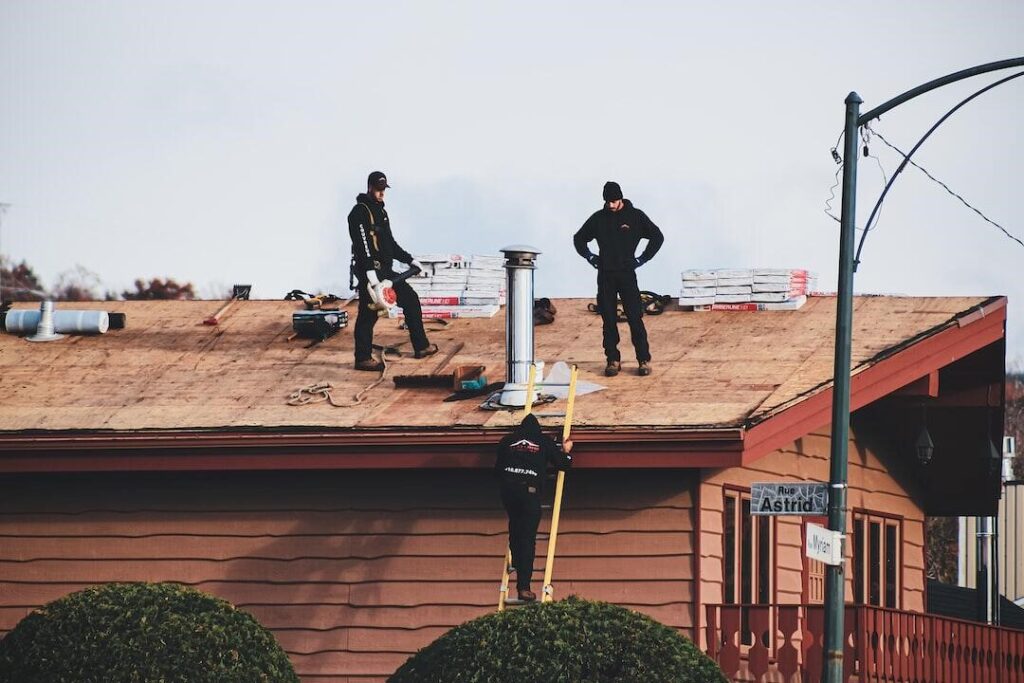When was the last time you had your roof inspected? Regular roof inspections are key to maintaining the integrity of your home and avoiding costly repairs down the line.
However, many homeowners aren’t sure how to prepare for a roof inspection or what to expect during the process. This guide will provide you with all the essential information you need, ensuring you’re fully prepared and able to get the most out of your roof inspection.
Why Roof Inspections Are Important
Before we get into the specifics of preparing for a roof inspection, let’s talk about why they’re so crucial. Your roof is one of the most important parts of your home, it’s your first line of defense against the elements.
A damaged or poorly maintained roof can lead to leaks, structural damage, and even mold growth. Regular inspections can help catch small issues before they become big problems, saving you time, money, and stress in the long run.
When to Schedule a Roof Inspection
Knowing when to schedule a roof inspection is just as important as knowing how to prepare for one. Here are some key times to consider:
After Severe Weather
If your area experiences a severe storm, it’s a good idea to schedule a roof inspection. Hail, heavy winds, and torrential rain can all cause significant damage to your roof, even if it’s not immediately visible.
Annually
Even if there hasn’t been any severe weather, it’s wise to have your roof inspected at least once a year. This helps ensure any minor issues are caught early.
Before Selling Your Home
Planning to put your house on the market? A roof inspection can give potential buyers peace of mind and help you avoid last-minute surprises during the selling process.
Step-by-Step Guide to Preparing for a Roof Inspection
Now that you understand the importance of regular roof inspections and when to schedule them, let’s look at how to prepare for one. Follow these steps to ensure you’re ready for a thorough and effective inspection.
Step 1: Choose a Qualified Inspector
The first step in preparing for a roof inspection is choosing the right roofing professional for the job. Look for a licensed and insured roof inspector with good reviews and a solid reputation. Ask friends, family, or neighbors for recommendations, or search online for local roof inspection services.
Step 2: Review Previous Inspection Reports
If you’ve had your roof inspected before, review any previous reports before your upcoming inspection. This can help you identify areas that need special attention and give your inspector a better understanding of your roof’s history.
Step 3: Clear the Area Around Your Home
Make sure the area around your home is clear of any obstacles that could hinder the inspection process. Move vehicles, outdoor furniture, and any other items that might be in the way. This will allow the inspector to access all parts of your roof more easily.
Step 4: Trim Overhanging Branches
Trees with overhanging branches can potentially damage your roof, particularly during storms. Trim any overhanging branches before your inspection to give the inspector a clear view of your roof and prevent future issues.
Step 5: Check Your Attic
Your attic can provide valuable insights into the condition of your roof. Before the inspection, take a moment to check your attic for any signs of leaks, mold, or water damage. Make a note of any issues you find so you can point them out to the inspector.
Step 6: Make a List of Concerns
If you’ve noticed any issues with your roof, such as missing shingles, sagging areas, or water stains on your ceiling, make a list of these concerns. Share this list with your inspector so they can pay special attention to these areas during the inspection.
Step 7: Gather Relevant Documents
Have any documents related to your roof handy, such as warranties, previous inspection reports, and repair receipts. These can provide valuable context for your inspector and help them make more informed recommendations.
What to Expect During the Inspection
Knowing what to expect during a roof inspection can help you feel more prepared and at ease. Here’s a breakdown of the typical roof inspection process:
Exterior Inspection
The inspector will start by examining the exterior of your roof. This includes looking for:
- Missing, damaged, or curled shingles
- Wear and tear around chimneys, vents, and skylights
- Problems with the flashing
- Blockages or damage in gutters and downspouts
Interior Inspection
Next, the inspector will check the interior of your home, particularly the attic. They’re looking for:
- Signs of leaks or water damage
- Proper insulation and ventilation
- Mold or mildew growth
Detailed Report
After the inspection, you’ll receive a detailed report outlining the condition of your roof and any recommended repairs or maintenance. This report will include photos and a written summary of the findings.
Post-Inspection Steps
Once your roof inspection is complete, there are a few steps you should take:
Review the Report
Carefully review the inspection report and make note of any areas that need attention. If you have any questions or concerns, don’t hesitate to ask your inspector for clarification.
Schedule Repairs
If the inspection reveals any issues that need to be addressed, schedule the necessary roofing replacement or repairs with a professional such as this roofer in Overland Park as soon as possible. Delaying repairs can lead to more extensive and costly damage down the line.
Plan for Regular Maintenance
To keep your roof in good condition, plan for regular maintenance. This might include cleaning gutters, trimming overhanging branches, and scheduling annual inspections.
Follow This Guide to Prepare for a Roof Inspection
Preparing for a roof inspection doesn’t have to be daunting. By following the steps outlined in this guide, you can ensure your roof is thoroughly inspected and any issues are promptly addressed.
Remember, a well-maintained roof is key to protecting your home and avoiding costly repairs. Don’t wait until there’s a problem-schedule regular roof inspections and stay proactive about your roof’s health.
Ready to take the next step? Contact a qualified roof inspector today and give your home the protection it deserves.
Explore more fascinating topics by reading our other articles on the blog and broaden your knowledge today.







